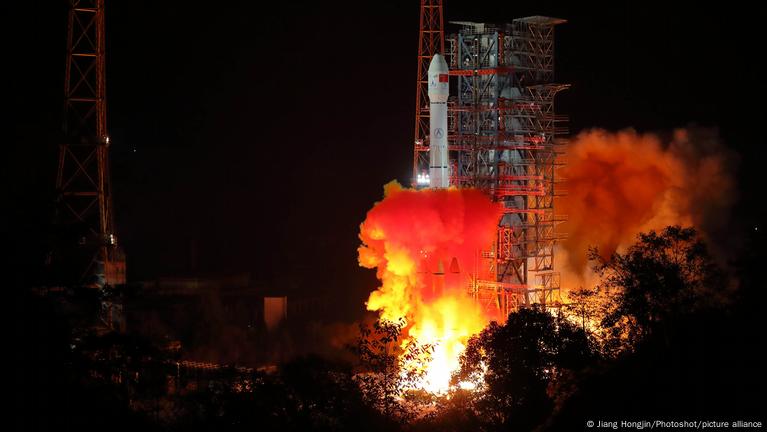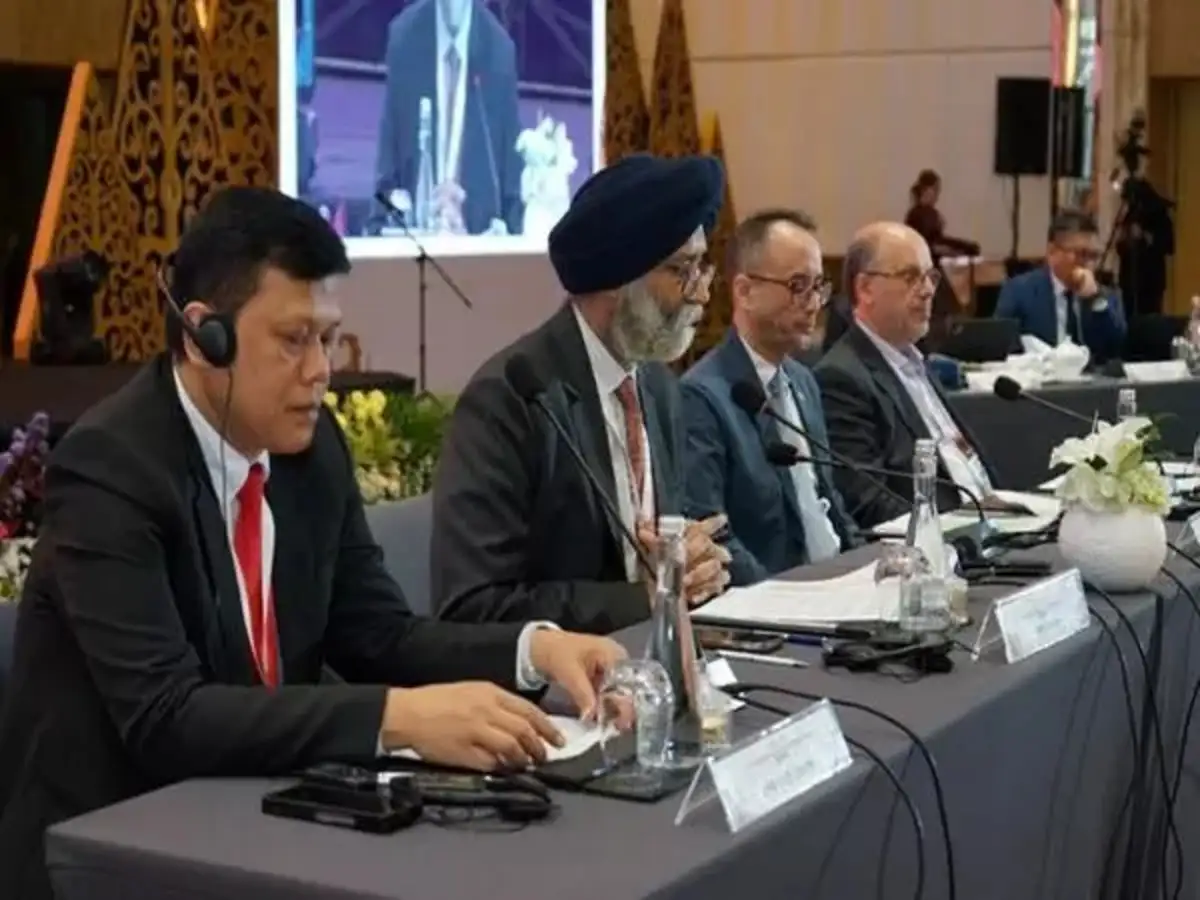- Courses
- GS Full Course 1 Year
- GS Full Course 2 Year
- GS Full Course 3 Year
- GS Full Course Till Selection
- Online Program
- GS Recorded Course
- NCERT (Recorded 500+ Hours)
- Polity Recorded Course
- Geography Recorded Course
- Economy Recorded Course
- AMAC Recorded Course
- Modern India, Post Independence & World History
- Environment Recoded Course
- Governance Recoded Course
- Science & Tech. Recoded Course
- International Relations and Internal Security Recorded Course
- Disaster Management Module Course
- Ethics Recoded Course
- Essay Recoded Course
- Current Affairs Recoded Course
- CSAT
- 5 LAYERED ARJUNA Mentorship
- Public Administration Optional
- ABOUT US
- OUR TOPPERS
- TEST SERIES
- FREE STUDY MATERIAL
- VIDEOS
- CONTACT US
China’s 1st Attempt To Survey And Sample an Asteroid : China’s Space Mission Tianwen-2
China’s 1st Attempt To Survey And Sample an Asteroid : China’s Space Mission Tianwen-2

- China plans to launch its Tianwen-2 mission at the end of May 2025.
- This is China’s 1st attempt to survey and sample an asteroid.
- If successful then it will elevate China into an elite group of countries — including the US, Russia, and Japan — capable of interplanetary sample-return missions.
- Interplanetary sample-return missions are space missions designed to travel from Earth to another celestial body within our solar system to collect physical samples (like soil, rocks, dust), and then bring those samples back safely to Earth for detailed analysis.
- These celestial bodies could be an asteroid, comet, the Moon, or Mars.
Background
- China’s space program has made significant progress in recent years with missions like Chang’e lunar sample returns and Tianwen-1, its Mars orbiter and rover mission.
- Tianwen-2 is part of this ongoing effort to deepen China’s presence and capabilities in planetary exploration.
Key Details of Tianwen-2 Mission
- The spacecraft will launch on a Long March 3B rocket from the Xichang Satellite Launch Centre in Sichuan province.
- The exact launch date has not yet been confirmed by the China National Space Administration (CNSA), but it is scheduled for late May 2025.
- Primary Mission : Asteroid Kamoʻoalewa (469219)
- Tianwen-2 will first visit the asteroid Kamoʻoalewa (469219), a near-Earth object that orbits the Sun but stays close enough to Earth to be called a quasi-satellite.
- It is estimated to be 40 to 100 meters in diameter.
- Scientists hypothesize that Kamoʻoalewa might be a fragment of the Moon, blasted off by an ancient impact and now trapped near Earth.
- Its orbit loops around Earth while also orbiting the Sun.
- Tianwen-2 will use a touch-and-go sampling method, where a robotic arm briefly contacts the asteroid’s surface to collect dust and particles.
- This technique has been successfully employed by NASA’s OSIRIS-REx and Japan’s Hayabusa2 missions.
- Additionally, the spacecraft will attempt a 2nd sampling method involving anchoring and drilling.
- This method deploys robotic arms to grip the surface and extract subsurface materials.
- The collected samples will be returned to Earth before the spacecraft continues to its second mission phase.
- Secondary Mission – Comet 311P/PANSTARRS:
- After returning samples from Kamoʻoalewa, Tianwen-2 will journey to the main asteroid belt to study 311P/PANSTARRS, a comet known for its unusual, intermittent dust tails.
- Unlike the asteroid mission, Tianwen-2 will not collect samples from this comet but will perform detailed remote sensing and composition analysis.
- Duration: The mission to Kamoʻoalewa is expected to take about two and a half years.
- The entire mission, including the comet study, could last up to a decade.
Significance of Tianwen-2 Mission
- This mission will provide new insights into the origin and nature of near-Earth objects and main-belt comets.
- Studying Kamoʻoalewa could improve understanding of the Earth-Moon system and early solar system processes.
- The analysis of 311P/PANSTARRS will help clarify the behavior of main-belt comets, which are key to understanding how water and organics were delivered to Earth.
- Tianwen-2 will demonstrate China’s capability in complex space exploration techniques such as autonomous navigation, asteroid sample return, and multi-phase deep-space missions.
About the Name “Tianwen”
- The name “Tianwen” means “Heavenly Questions”.
- It is derived from a classical Chinese poem written by the poet Qu Yuan around 278 BCE.
- The poem is a philosophical inquiry into the mysteries of the cosmos, which fits the mission’s goal to explore fundamental questions about the solar system.
Related Missions
- Tianwen-1: Launched in July 2020, it was China’s first Mars mission.
- Its rover landed in May 2021 but was later put into hibernation and failed to restart by the end of 2022.
- Tianwen-3: Scheduled for 2028, it aims to return samples from Mars and will build upon the experiences gained from Tianwen-2.
What is the Difference Between Asteroid and Comet :
|
Aspect |
Asteroid |
Comet |
|
Composition |
Mostly rocky and metallic materials. |
Composed of ice, dust, and rocky material ("dirty snowballs"). |
|
Location |
Primarily found in the asteroid belt between Mars and Jupiter. |
Originate from the Kuiper Belt and Oort Cloud, far beyond Neptune. Some can also be in the asteroid belt (main-belt comets). |
|
Appearance |
Usually appear as small, rocky bodies without visible tails. |
When near the Sun, develop bright glowing comas (atmospheres) and tails due to sublimation of ices. |
|
Orbit |
More circular and stable orbits, mostly between Mars and Jupiter. |
Highly elliptical orbits that bring them close to the Sun and then far out into the solar system. |
|
Activity |
Inactive; do not emit gas or dust. |
Active; release gas and dust as ices sublimate when warmed by the Sun. |
|
Size |
Range from meters to hundreds of kilometers. |
Usually smaller nuclei, but with large comas and tails when active. |
|
Also Read |
|
| FREE NIOS Books | |



